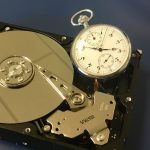I recently added a mirror to a very simple zfs pool and decided to document it here for posterity. This worked flawlessly in a FreeNAS 10 system with two 4 TB drives.
RAID
ZFS Is the Best Filesystem (For Now…)
ZFS should have been great, but I kind of hate it: ZFS seems to be trapped in the past, before it was sidelined it as the cool storage project of choice; it’s inflexible; it lacks modern flash integration; and it’s not directly supported by most operating systems. But I put all my valuable data on ZFS because it simply offers the best level of data protection in a small office/home office (SOHO) environment. Here’s why.
Turn Off Error Recovery in RAID Drives: TLER, ERC, and CCTL
Hard disk drives encounter errors from time to time, so it’s a good thing that most have the ability to recover data anyway. But RAID systems usually have their own error recovery capabilities and can be thrown off when a hard disk pauses I/O. So it’s a good idea to use hard disk drives that allow you to disable or limit error recovery in RAID systems.
FreeNAS First Impressions
I’ve dabbled with FreeNAS in the past and had such a great experience with pfSense (a similar FreeBSD-based project) that I jumped in with both feet on my home office server build. But my initial impressions were, frankly, terrible. I’ve got the system running and stable now, but I’m finding it difficult to recommend FreeNAS at this point.
The Four Horsemen of Storage System Performance Are Coming To Life!
A few years back, I wrote an immensely-popular series of blog posts outlining the four things that were holding storage system performance back, and the ways to fix them. At the time, I created some presentation content to go along with these posts, and even considered pulling them into a white paper, but nothing came of that. Now, however, I’m pleased to announce that my Four Horsemen are accompanying me to the stage November 10, 2015 at the DeltaWare Data Solutions Emerging Technology Summit in Edina, Minnesota.



